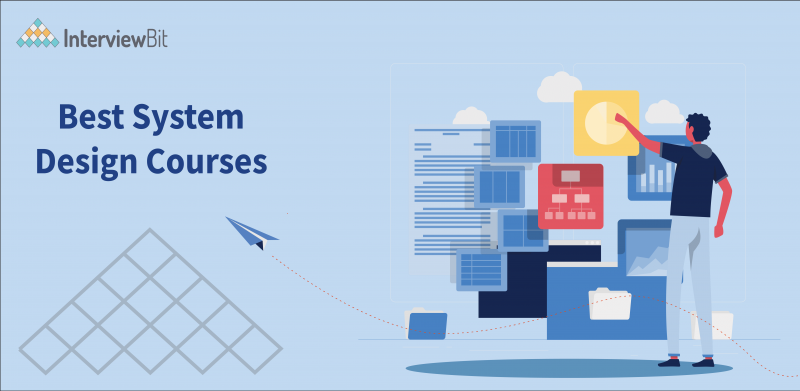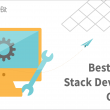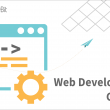- What is System Design?
- Best System Design Courses
- 1. Scaler Academy’s System Design Course
- 2. Software Design and Architecture Specialization by the University of Alberta
- 3. Data Structures and Software Design by edX
- 4. Master Object-Oriented Design in Java – Homework + Solutions by Udemy
- 5. SystemsExpert by AlgoExpert.io
- 6. Secure Software Design Specialization by the University of Colorado
- 7. Java Programming: Principles of Software Design by Duke University
- 8. Grokking the System Design Interview by Educative
- 9. Object-Oriented Analysis, Design & Programming with UML by Udemy
- 10. Software Architecture & Design by Georgia Tech
- Why is System Design important?
- Conclusion
- Useful Resources
What is System Design?
System design is the process of defining system characteristics including modules, architecture, components, and their interfaces, and data for a system based on defined requirements. It is the process of identifying, developing, and designing systems to meet the specific aims and expectations of a corporation or organization. Systems design is less about coding and more about system analysis, architectural patterns, APIs, design patterns, and glueing it all together. Designing your system appropriately for the requirements of your application will minimize unnecessary costs and maintenance efforts, as well as provide a better experience for your end-users because your application will be able to handle the architectural load.
When it comes to tech interviews, it’s difficult to neglect system design! Almost every product-based company, whether it’s Facebook, Amazon, Google, or another, asks a series of questions based on System Design concepts such as scalability, load balancing, caching, and so on, during the interview.
Best System Design Courses
Here is a list of the best online courses to learn system design and ace any coding interviews.
Confused about your next job?
1. Scaler Academy’s System Design Course
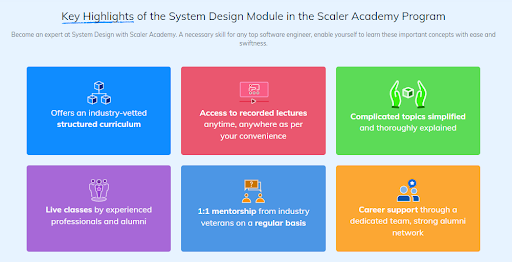
Our System design course will help you learn how to turn abstract statements into practical software designs that may be used in real-world situations. You will be able to understand how database systems, caches, message queues, and load balancers function and how to implement them in the most optimal way. It will deep dive into low-level and schema design for real-world apps and games with millions of users.
The course is suited for all types of programmers whether they are beginners, intermediate or advanced. Beginner programmers will be taught extensively for 44 weeks, intermediate programmers for 37 weeks, and advanced programmers for 30 weeks.
- The course will start with the Introduction to Programming module for beginners where decision trees, binary number systems, strings, arithmetic operations, and loops will be taught.
- The next module will be Programming Constructs where you will study Functions, Recursion, Pointers, Structures, Unions, Dynamic Arrays, and Asymptotic Notations. Both of these modules will take 7 weeks each.
- After completing the beginner modules, you will move forward to the intermediate level focused on problem-solving & CS fundamentals where you will be taught all the necessary data structures and algorithms like Stack and queue, Binary Trees, Tries, Hashmap and heap, Dynamic Programming and Graph Algorithms, etc.
- Also, you will learn about core subjects such as Database Management Systems (DBMS), Operating Systems (OS), and Computer Networks (CN). This module will take around 15 weeks to complete.
- Now, comes the advanced module. You will be given two choices, of whether you want to do specialization in Backend or FullStack. Here, you will learn high-level design, and low-level design (object-oriented design) with projects. It will take around 15 weeks for completion.
The course content will include MVC Architecture, Rest APIs, ORM, SpringBoot, Database Indexes, and Multithreading for Backend Specialization, whereas, HTML, CSS, Javascript, Nodejs, Backend Architecture, MongoDB and React for FullStack Specialization.
There will be optional electives for advanced programmers as the last module where you can choose one or more electives from Advanced DSA, Concurrent Programming, and Product Management. Each of these electives will take approximately 4 weeks to complete.
This course is suitable for working professionals who have graduated on or before 2022 (when enrolling in 2023).
2. Software Design and Architecture Specialization by the University of Alberta
You will study how to apply design ideas, patterns, and architectures to construct reusable and flexible software applications and systems in the Software Design and Architecture Specialization. You’ll learn how to use visual notation to express and document the design and architecture of a software system.
It is a specialization comprising four full-fledged courses on topics such as Object-Oriented Design, Design patterns, Software Architecture, and Service-Oriented Architecture.
The first course in this specialization focuses on building conceptual knowledge of object-oriented programming in Java. You’ll learn how to use object-oriented design ideas and guidelines to construct modular, adaptable, and reusable software. You’ll also be able to communicate your designs using the Unified Modelling Language, a visual notation (UML).
The second course builds on object-oriented analysis and design by including design patterns in interactive applications. You’ll develop a foundation for more complicated software applications by surveying recognized design patterns. Finally, you’ll use a list of code smells to identify bad software designs.
In the third course, you’ll learn how to model complex architectures using UML and other visual tools. You will go through the most prevalent architectures, as well as their benefits and drawbacks. They will discuss how architecture is judged, what makes good architecture, and how to enhance architecture.
Finally, in the fourth course, you’ll analyze web application designs based on your understanding of architectural styles, then look at the basics of Service-Oriented Architecture (SOA) in two ways: Web Services (WS*) and Representational State Transfer (REST) architecture.
This course is taught by Kenny Wong, Associate Professor, Computing Science. It is designed for beginner-level coders who only need to have basic Java programming language knowledge to get started.
This specialization comprising of 4 courses will take you approximately 4 months to complete with a suggested pace of 3 hours/per week.
3. Data Structures and Software Design by edX
It is a course provided by the University of Pennsylvania which is a part of the CS Essentials for Software Development Professional Certificate program.
You will learn how to store and retrieve data in any Java program, identify the best data structures for the problem statement, and use inbuilt Java Collections.
It will also help you to improve your software design quality by applying object-oriented design principles. This course will teach you how to convert a set of requirements to a software design of high quality.
The course structure is designed to take 4 weeks to complete. It is being taught by Chris Murphy, Senior Lecturer in the Department of Computer Science at Bryn Mawr College.
The syllabus includes weekly chapters, namely, Core Data Structures, Advanced Data Structures, Software Design, and Implementing or Improving Software.
This course is designed for intermediate-level programmers who already have a decent knowledge of Java Syntax, keywords, and Object-Oriented Programming principles like polymorphism, inheritance, and abstraction in Java.
4. Master Object-Oriented Design in Java – Homework + Solutions by Udemy
- This course is based on Learning By Doing approach in which concepts are taught using articles, and progressively challenging exercises.
- This course will help you discover the 5 core object-oriented design principles acronym “SOLID”, namely where S stands for Single Responsibility, O for Open/Closed, L for Liskov Substitution, I for Interface Segregation, and D for Dependency Inversion.
- This course also covers 80% of the design patterns which are mostly used in today’s professional software development. These include Strategy Patterns, Observer Patterns, Builder Patterns, Factory Method Patterns, Template Method Patterns, and Singleton Patterns.
- The course is suitable for beginners who need to have knowledge of basic language constructs such as classes, methods, and interfaces. However, there is an additional optional module to learn about object-oriented programming if you are an absolute beginner.
It is a short course with 5.5 hours of on-demand video on various object-oriented design principles in Java.
5. SystemsExpert by AlgoExpert.io
This course is suitable for video learners, as it comprises hours of in-depth video tutorials. This course is regularly updated with quizzes, mock interview problems, video lessons, etc.
The course comprises fundamental building blocks, hand-picked interview questions, comprehensive video solutions, a glossary, real-life coding examples, and a set of 50 quizzes.
It has 25 learning modules which include topics like Client-Server Model, Network Protocols, Storage, Latency and Throughput, Availability, Caching, Proxies, Load Balancers, Hashing, Relational Databases, Key-Value Stores, Replication and Sharding, Leader Election, Peer-to-Peer Networks, Polling and Streaming, Configuration, Rate Limiting, Logging and Monitoring, Publish Pattern, MapReduce, Specialized Storage, HTTPS, and API design.
This course is not suitable for beginners, but intermediate to advanced-level programmers can learn system design from this course.
6. Secure Software Design Specialization by the University of Colorado
- It is a specialization offered by the University of Colorado made to help students learn how to design and maintain secure software.
- It comprises four courses namely, Software Design as an Element of the Software Development Lifecycle, Software Design as an Abstraction, Software Design Methods, and Tools, and Software Design Threats and Mitigations.
- You will gain various skills including UML, Unit Testing and Ethics, Effective User Interfaces, and Database Design.
- This course has a flexible schedule with an approximate course completion time of 7 months.
- This specialization is suitable for beginner-level programmers as no pre-requisite is required to begin with this course.
7. Java Programming: Principles of Software Design by Duke University
- It is a course offered by Duke University as a part of specialization in ‘Java Programming and Software Engineering Fundamentals Specialization’ to learn Java Programming and various Software Design principles.
- After this course completion, you will be able to:
- Use sorting effectively in problem-solving
- Create classes that use a comparable interface.
- Analyze empirical performance using time data;
- Divide problems into several classes, each having its own set of methods;
- Determine whether a Java API class can be used to solve a specific problem;
- Use multiple ways to implement programming solutions and evaluate tradeoffs;
- When writing programs, use object-oriented notions such as interfaces and abstract classes.
- Hide implementation decisions appropriately so that they are not evident in public methods;
- Recognize that algorithms and Java programs have limitations when it comes to fixing problems.
- Recognize common Java classes and idioms, such as exception handling, static methods, and the java.net and java.io packages.
This course is ideal for beginner-level programmers and the course will take approximately 13 hours to complete.
8. Grokking the System Design Interview by Educative
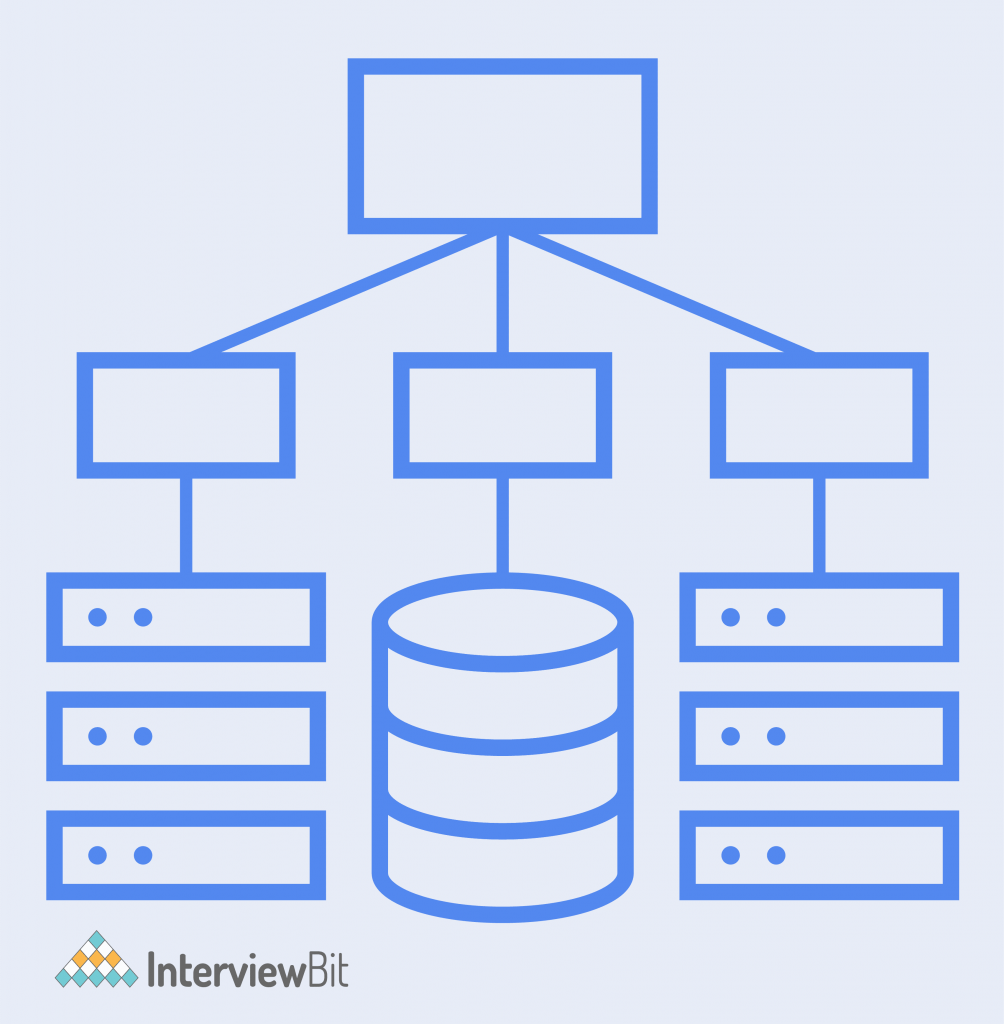
This course will teach you all you need to know about System Design Interviews (SDIs). It was put together by hiring managers from Google, Facebook, Microsoft, and Amazon.
They have hand-picked a set of questions that have been asked time and time again in face-to-face interviews of various product-based companies. This course focuses on text-based learning and provides a hands-on coding environment with no setup required.
The course starts with various system design problems like Designing Pastebin, Instagram, Dropbox, Facebook Messenger and news feed, Twitter, Youtube or Netflix, API rate limiter, Web Crawler, Yelp, Uber backend, and Ticketmaster.
Then certain terms and concepts associated with system design are taught like Characteristics of Distributed Systems, Load Balancing, Caching, Data Partitioning, Indexing, Proxies, Redundancy and Replication, SQL vs NoSQL databases, CAP theorem, consistent hashing, and the list is expanded every now and then.
The course is suitable for intermediate coders who know basic programming beforehand. It approximately takes 20 hours to complete the entire course content. You will get a course completion certificate as well.
9. Object-Oriented Analysis, Design & Programming with UML by Udemy
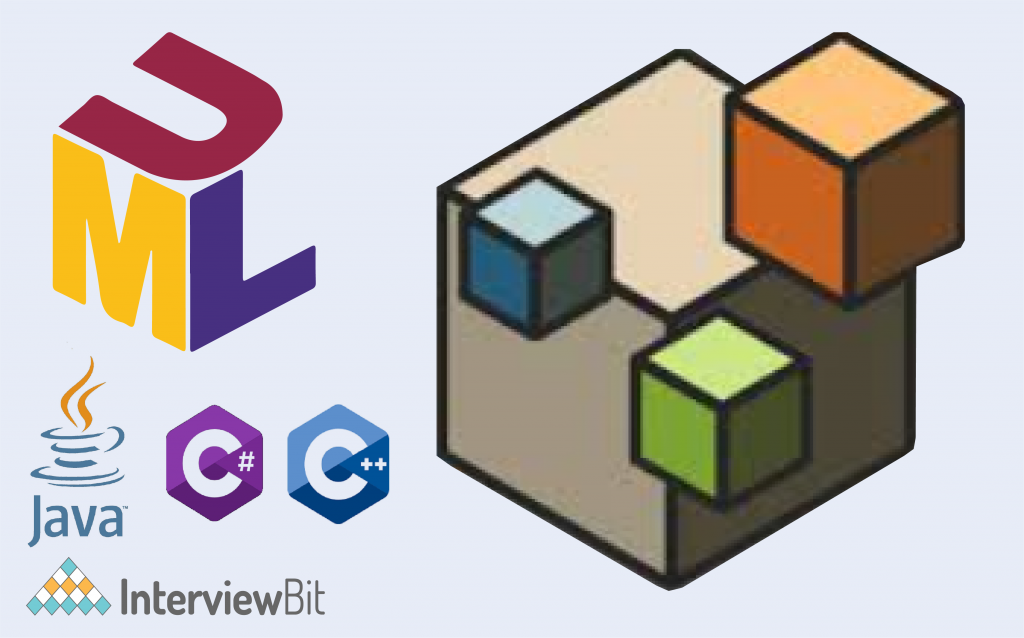
- It’s a one-of-a-kind course that teaches students how to create software using object-oriented methodologies. The course will begin with gathering requirements and finish with implementation.
- You’ll learn how to evaluate and design classes, as well as their connections to one another, to create a model of the problem domain. Throughout this procedure, you’ll also use typical UML diagrams like use-case, class, activity, and other diagrams. A free tool will be used to produce the diagrams.
- Use cases are heavily emphasized as a means of capturing and managing requirements. These are then utilized to enforce OO ideas, resulting in a reusable system architecture that adapts to change. Finally, the concept is implemented in three computer languages: Java, C#, and C++.
- The course comprises of 10.5 hours on-demand video, 4 articles, and 12 downloadable resources. The content includes topics like Object-Oriented Analysis, Design and programming, Reckless Driver Implementation, Interaction Diagrams, State Machine Diagrams, Refactoring, and more UML diagrams.
- This course is ideal for beginner programmers who want to learn Unified Modelling Language and apply it in the software development process, Object-Oriented Programming Principles, Object-Oriented Design and Analysis.
- It is being taught by Umar Lone who is a trainer, developer & founder at Poash Technologies.
10. Software Architecture & Design by Georgia Tech

- In this course, various principles and concepts involved in the analysis and design of large software systems are being taught such as
- Introduction: Browser Exercise and Design Concepts
- UML and Analysis: Review of UML, Exercise, and UML Class Models
- Software Architecture: KWIC Exercise, Overview, and Architectural Views
- Software Design: Components, Coffee Maker Exercise, and Object Design
- This course is provided on the Udacity platform and the lead instructors are Spencer Rugaber, Eric Feron, and Jarrod Parkes.
- It will provide students with the skills and information they need to achieve the following goals:
- Learn Software Development Analysis and Design using UML
- Using OCL, provide the functional semantics of an application.
- Specify and evaluate software architectures
- Choose and employ the relevant architectural styles.
- Learn how to use object-oriented design principles and put them into practice.
- Choose and apply the right software design patterns.
- Understand what a design review is and how to perform one.
This course will take approximately 2 months to complete, and the skill level required is intermediate. Students should have taken a software engineering course as an undergraduate or have prior software development experience.
Why is System Design important?
A software engineer who is proficient in both high-level and low-level design is more productive. It helps an engineer make architectural decisions that improve the efficiency and scalability of a software system while lowering the cost of an organization. It helps you to distinguish between the various databases available, such as MySQL, PostgreSQL, and others. It also allows you to find the appropriate tool for a certain engineering problem, such as Messaging Queues, different Message Brokers, Caches, Storage Options like CDN, Columnar Data Store, Load Balancers, and so on.
A content delivery network, or CDN, is a worldwide distributed proxy server network that distributes content to end-users from sites close to them. Static files such as HTML, CSS, JS files, pictures, and videos are typically provided from CDNs on websites. Caching is the process of saving the bits of your data that will be used the most at a location that is faster than the storage/DB.
Software systems keeping system design principles in mind will be of higher quality. Proper system design knowledge can reduce a company’s long-term engineering costs. It also helps in making software solutions that can handle changing product requirements as well as large-scale operations.
When creating a software system, you must consider the following factors to become a master of systems design:
- Understand the product requirements (both present and future) as well as the edge case scenarios.
- Make and document software and system designs, such as Class Diagrams, Schema Diagrams, and Architectural High-Level Diagrams.
- Understand the benefits and drawbacks of each software system, such as databases and caches, and when to utilize them.
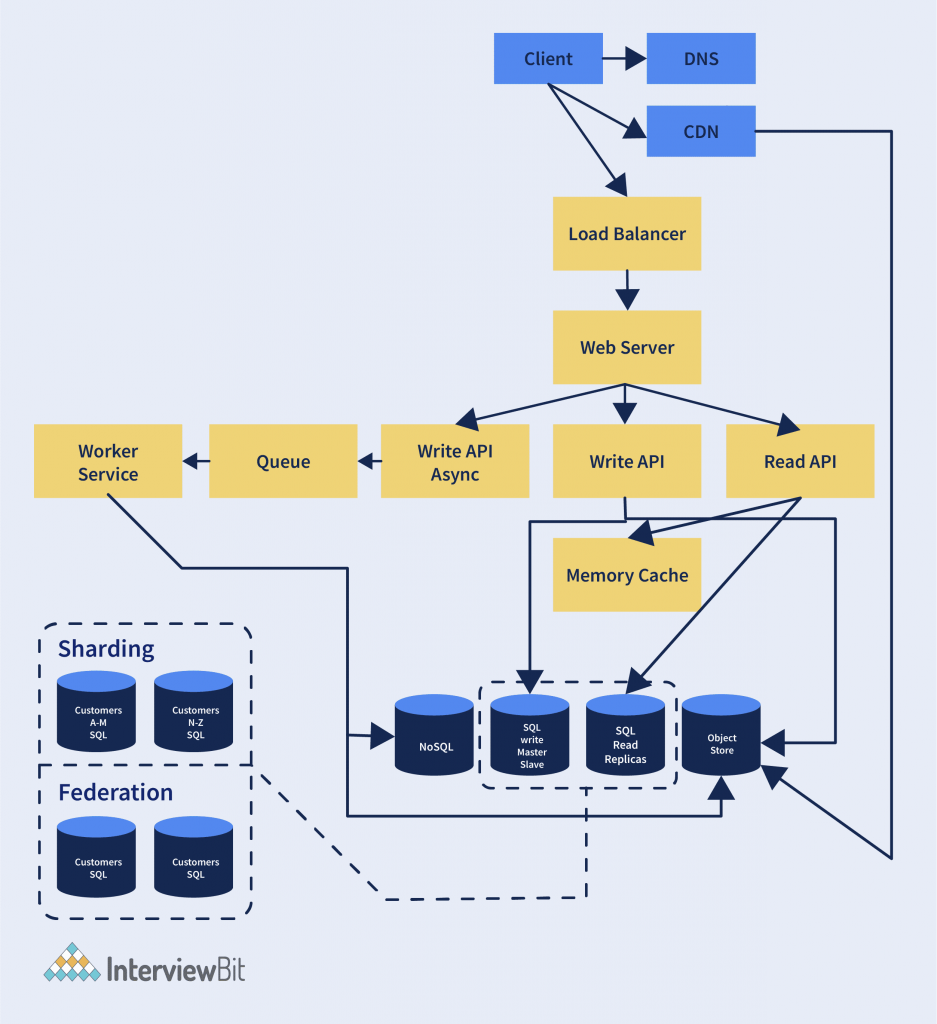
But before exploring any system design course, we would recommend you have a good grasp of basic data structures and algorithms like Arrays, Strings, Recursion, Dynamic Programming, Graphs Algorithms, Hashmap, Heap, Greedy Algorithms, Divide and Conquer, etc.
After having a decent knowledge of data structures and algorithms, it is better to know some core subjects associated with any computer science degree before diving deep into designing scalable systems. These courses include Object-Oriented Programming, Operating Systems, Database Management Systems, and Computer Networks. You can go through the top interview questions of OOPS, Networking, DBMS, and OS for quick revision. For a detailed study, you can refer to free resources on Operating Systems and Database Management Systems.
Now that you know basic data structures, algorithms, and core subjects, you are good to go. You are just one step away from cracking big product-based companies, which is having a practical knowledge of high-level design and low-level design (object-oriented design). What you need to clear such rounds is the best system design course which covers every concept in detail. In this article, we have collated a list of the top-rated and reviewed system design courses available online.
Conclusion
There are several courses available for learning system design, but only a handful of them have the complete content and are ideal for interview preparation. Object-oriented design and system design are important aspects of coding interviews for various product-based companies, thus these courses may help you crack them.
The courses discussed in this article provide a decent balance between low-level design and high-level design. They also contain every notion you’d need if you were asked to code anything in the real world. Anyway, I believe you now have enough knowledge to decide which course you should pursue next. Pick one and get started on your journey to working for your dream company!


